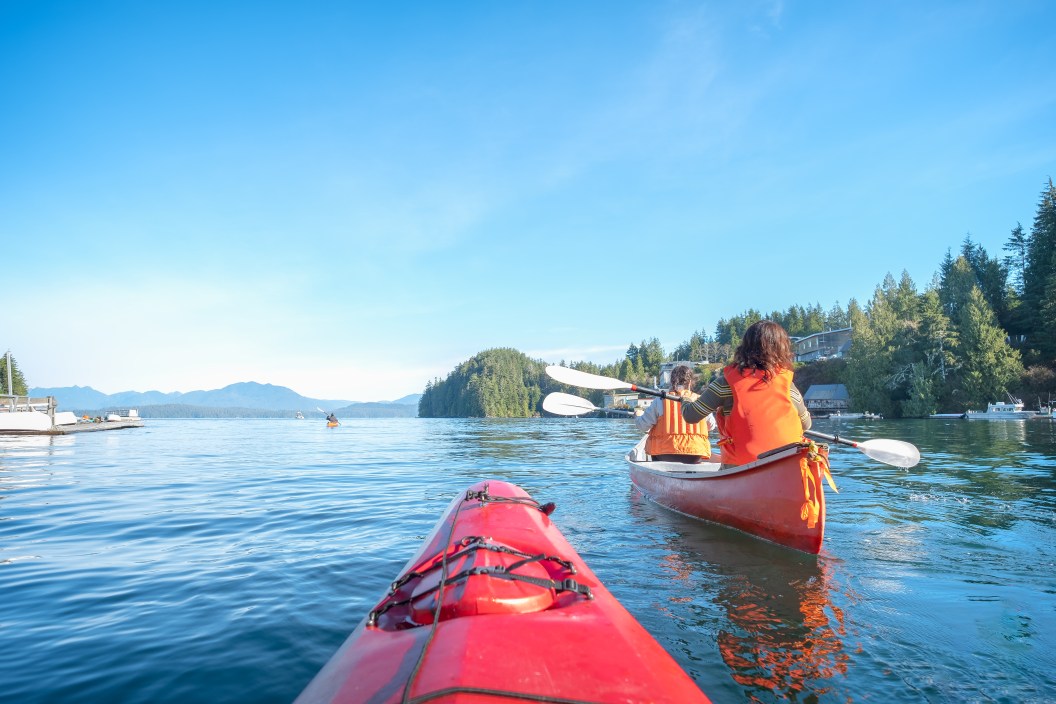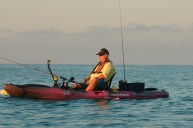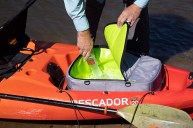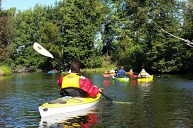There's nothing quite like being on the water, whether to explore the national parks by kayak or to go bass fishing. Venturing out, paddle in hand, is a much-needed antidote to the stressors of everyday life. But if you're new to paddling, you can be forgiven for thinking a canoe vs. kayak are one and the same. Not only that, with many different styles of both watercrafts, it can be hard to know which to choose, even once you understand the basics.
Here, we break down the differences of a canoe vs. kayak, as well as the pros and cons of each.
All About Canoes
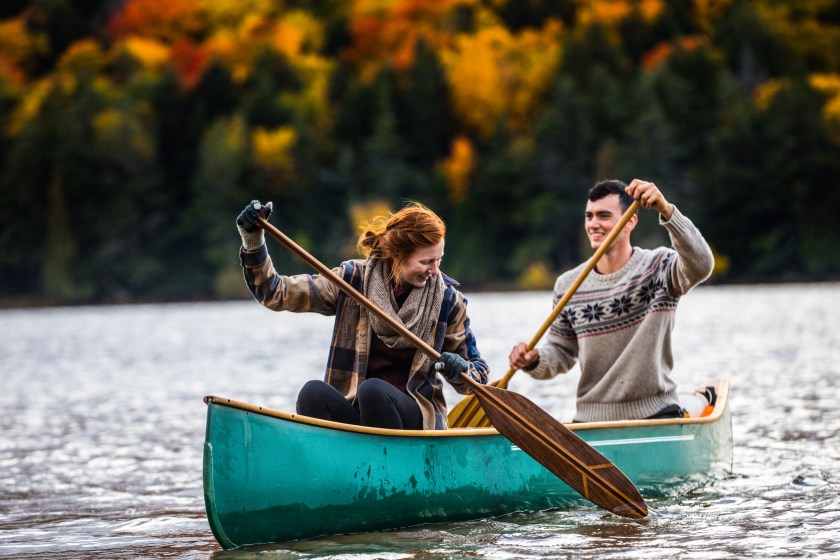
Getty Images, LeoPatrizi
Canoe Size & Construction
There are several different types of canoes—namely, recreational, racing, and whitewater—but in general, all canoes are longer than kayaks (typically measuring 13 to 17 feet), have wide frames, tall sides, and completely open tops, making them ideal for stowing plenty of gear, including a cooler, plus a friend or two for a day trip. Canoes also allow paddlers to sit higher above the water line than kayaks do.
While canoes boast spacious legroom, they're often only equipped with bench seats that lack backrests and might not be the most comfortable over long periods of time. But you do have the option to mount your own seat for more support.
The more spacious construction can make it more difficult to transport and store canoes. Some models may even require multiple people to move them.
Because of their size and construction, canoes are typically more expensive than kayaks. The average cost of a new canoe is around $900, although you can often find used options for a few hundred dollars less.
Boarding & Paddling a Canoe
Once you get a canoe to the water, it's pretty easy to board. They're known for being stable and safe in calm waters. You can stand up in a canoe with little worry of tipping the craft over. Because canoes offer plenty of room and stability, they can be a good choice for fishing.
Paddling a canoe takes a bit of practice to master and some extra elbow grease to propel you through the water. Canoe paddles are short with a single blade on one end, but to keep the canoe moving in a straight line, you'll need to do the same movements on each side, which is where having multiple paddlers come in handy. Getting a synchronized system going is the best way to efficiently move through the water. Once you've got the paddling techniques down, though, you're good to go.
You might want to choose a canoe if you primarily paddle on calm waters, enjoy taking other paddlers with you, and are equipped with the means to store and transport a larger watercraft.
Pros & Cons of Canoes
- Safer on calm water
- Stable and less likely to tip
- Offer plenty of room for gear and additional paddlers
- Easier to get in and out of
- Allow for standing up
- Can be challenging to right when going of course
- Require more space for storage and transportation
- Can be tougher to paddle
All About Kayaks
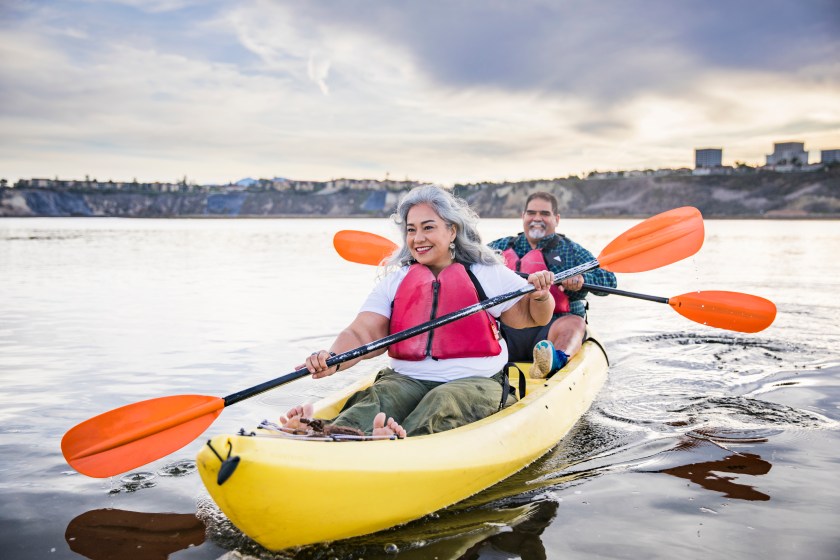
Getty Images, adamkaz
Kayak Size & Construction
Kayaks come in lots of different configurations, but they're generally slimmer and more compact than canoes. Some are designed for paddlers to sit on top, while others feature a sit-inside cockpit. Many kayaks only allow for one paddler, although tandem kayaks are available, too. Many offer sealed compartments to stow gear, but they don't have the same level of storage space as canoes.
Unless you opt for a pedal-drive or motorized model, kayaks are relatively lightweight, too. This, combined with their smaller construction, makes them much easier to transport and store.
While kayaks run the gamut from bargain buys to top-of-the-line motorized fishing setups, you can buy a solid recreational kayak for just a few hundred bucks brand-new. The ideal model and total cost will depend on your intended use.
The seat design will vary depending on the model and style, but kayaks usually offer more comfort for long days on the water.
Boarding & Paddling a Kayak
Getting in and out of a kayak without assistance can be a bit tricky, as kayaks aren't as stable as canoes. But once you get them on the water, kayaks are versatile enough to perform well on choppy ocean waters or calm lake waters.
Kayak paddles are long enough to reach the water on either side of the watercraft with their two blades. Moving through the water and maintaining speed—even for beginners—is easy without any assistance. If you want to enjoy the open water with friends but don't want to be stuck in the same watercraft as them, individual kayaks are the way to go.
While you can attempt to fish from just about any kayak, sit-on-top models made for casting and holding rods are best.
A kayak might be a better fit for you if you often paddle on choppy water, prefer to paddle on your own, and need a versatile watercraft that's easy to transport solo.
Pros & Cons of Kayaks
- Safer on rough or choppy water but still great on calm water
- Better choice for beginners
- Make maneuvering and correcting course relatively easy
- Paddling them is simpler
- Are easier to store and transport
- Some models can provide a level of protection from the elements
- Easier to maintain speed
- More likely to tip
- Limited space for gear and paddlers
- Can be more challenging to get in and out of
Canoe vs. Kayak: The Bottom Line
To make your decision, think about how you plan to spend your time on the water. Consider where you plan to paddle. Live on the water? You may want to consider a canoe. But if you plan to head out for adventures, a kayak may be easier to transport. And if your dog also loves water, you might consider a model that's comfortable for them, too. Make sure you think all of this through so you make the best decision for yourself.
READ MORE: Hook, Line, and Sunscreen: How to Protect Your Skin From the Sun
